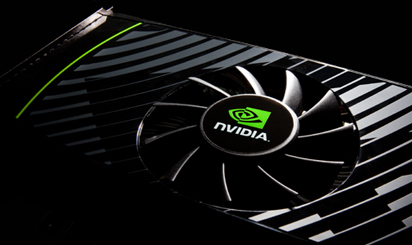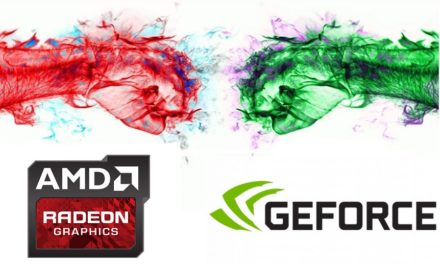
Tried: GeForce GTX 560 - filling or filling?

Untitled documents
 The weather turned warmer again. There is no problem with stability, the bohemian large coolers can withstand the rigors, but the temperatures show the increased room temperature. Looking at the video cards, it seems that we can't expect any real news from NVIDIA or AMD before the winter season, the big launches will remain for then and next year, so the manufacturers are renewing and redesigning the existing models. , or individual designs are launched.
The weather turned warmer again. There is no problem with stability, the bohemian large coolers can withstand the rigors, but the temperatures show the increased room temperature. Looking at the video cards, it seems that we can't expect any real news from NVIDIA or AMD before the winter season, the big launches will remain for then and next year, so the manufacturers are renewing and redesigning the existing models. , or individual designs are launched.
Now we continue where we left off last time (even before the GTX 580 duel). With the GeForce GTX 550 Ti and the Radeon HD 6790, we took a look at the price segment around 30 HUF, now we are adventuring in the category up one and get acquainted with the GeForce GTX 000. Yes, with him! Has he ever been to us? No! What struck us months ago was the GeForce GTX 560 Ti, with a higher price and more performance. The GTX 560 is a silly version of the big brother that takes on the Barts brothers, i.e. the Radeon HD 560 and HD 6850. The question is how effectively it does this - we will try to answer this at the end of the article.
Before we run through the participants, we will review in a few words the technical features of the GeForce GTX 560, ie how much has changed compared to the GeForce GTX 560 Ti:

One forward, one backward
Looking at the GeForce GTX 560 specifications, we can rightly feel this way. The novelty was created on the same principle as the GF104 chip, i.e. it contains disabled functional units. In the graphics processor codenamed GF114, seven SM blocks out of eight are active, which means that it has 336 CUDA cores and 56 texturizers. No changes have been made regarding the backend: the chip has 32 ROPs and a 256-bit memory controller. In the case of the predecessor, we mentioned that the consumption was a pleasant surprise due to the ever-improving maturation of TSMC's 40 nanometer production lines and the reduction of leakage current, but in the case of the GTX 560, born in the "harvesting," where the goal is to maximize the yield of chip production, the energy efficiency unsurprisingly deteriorated. . This means that although the performance of the card is lower than its big brother called Titanium, the consumption has not significantly decreased. Regardless, you can forget a lot with a good price tag...

The reference GTX 560 GPU has a clock speed of 810 MHz (starts at), stream processors tick at 1620 MHz, and the effective clock speed of GDDR5 memories is 4 GHz. The range of supported technologies is quite long (3D Vision, CUDA, DirectX 11, PhysX, SLI, DirectCompute 5.0 and OpenGL 4.1), but we can't find anything new at this point either. NVIDIA gave free rein to manufacturers who took advantage of the opportunity, resulting in a highly diversified supply in terms of clocks, cooling, and consumption.

Now we know what kind of creature this new GeForce is, so let’s see who represents him in the tests!
GIGABYTE GV-N56GOC-1GI
Since the GeForce GTX 560 is almost non-existent in the reference edition on the market, of course GIGABYTE has also come up with a model based on a custom printed circuit board with its own cooling solution. The PCB is 23,8 cm long, 13 cm wide and 4,3 cm high, so it has an average, easy-to-install size. The GPU has Windforce 2X cooling, which consists of a large aluminum rib interwoven with four thick copper heat pipes and two 10 cm (!) Fans. About Windforce cooling solutions on this page they could get more information.
The card has 1 GB of GDDR5 memory that communicates on a 256-bit bus. The GV-N56GOC-1GI is also made to the Ultra Durable VGA standard, meaning the PCB contains 2 ounces of copper and has Japanese solid electrolytic capacitors, quality iron core coils and MOSFETs on its surface. According to the company's measurements, this results in a 5-10% lower operating temperature, a 10-30% higher OC propensity and a 10-30% lower energy switching loss compared to the reference. Only first-class Hynix or Samsung memories are used for RAM, so we can rightly count on some reserves in the field of tuning.
In terms of outputs, in addition to the two DVIs, there is a mini-HDMI, which is 1.4a standard, and its special feature is that it is gold-plated on the blue printed circuit board (a DisplayPort converter is also included in the package). One piece of 560-pin PCI Express power connector is required to power the GIGABYTE GTX 6. For the GTX 560, the reference interval recommended by NVIDIA starts at 810 MHz, from which the engineers deviated by 20 MHz, so the OC marking should be considered modest this time. The shaders run at 1680 MHz, while the memories run at 4 GHz.
ASUS ENGTX560 DCII TOP / 2DI / 1GD5
The ASUS model as a TOP version is one of the most powerful GTX 560 releases on the market. At the company, the Direct CU II cooling used on most cards today also serves the GTX 560 TOP, which is similar in structure to the WindForce 2X solution. Large aluminum rib, solid copper heat pipes, two 8 cm fans. The heat pipes at the base are in direct contact with the surface of the GPU (hence the DirectCU). This solution has already been proven on a number of cards, so you can probably handle the GF114 in this form easily. It promises about 20% better performance than factory cooling according to internal measurements.
The black printed circuit board is 22,86 cm long and 11,17 cm wide, so it is approximately 1 cm shorter than the GIGABYTE edition. What is UDV at GIGABYTE is Super Alloy Power at ASUS. The term refers to the quality of power supply and the use of branded components, with cooler operating temperatures, 2,5 × longer service life and ~ 15% overdrive potential. This is aided by Voltage Tweak and Smart Doctor, using the utility we can increase the operating voltages so that even higher clock speeds become available.
The TOP version comes with assorted GPUs, so we managed to achieve a 925 MHz GPU and an 1850 MHz shader clock. 1GB of DDR5 RAM is ticking at 4200 MHz. It can be seen that in terms of clocks, the TOP version starts with a huge advantage over the GIGABYTE GTX 560 OC, so the battle between the two of them is practically decided in advance. In terms of outputs, ASUS also offers its product with two DVIs and one mini-HDMI. The GTX 560 TOP is also powered by a single 6-pin optional PCI Express power connector.
Opponents: AMD Radeon HD 6850, PowerColor Radeon HD 6870 (AX6870 1GBD5-2DH)
The HD 6850 is our own good that we got from AMD. It is not worth saying too many words about it, it has already been included in several of our measurements. It is an engineering copy, but it works perfectly fine and has the final reference clocks. The other Radeon racer is the HD 6870, which came to us from the PowerColor workshop with the help of Bluechip Kft. It has unique cooling and also operates at AMD-recommended clocks, so it served as the perfect subject for the test.
























